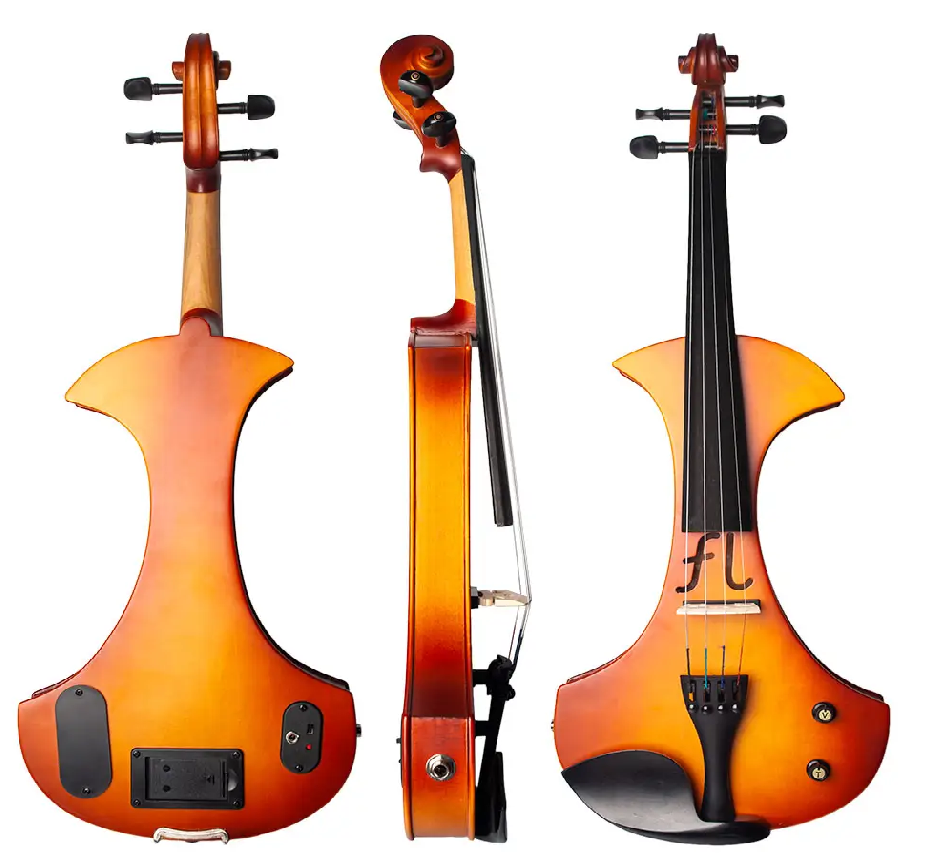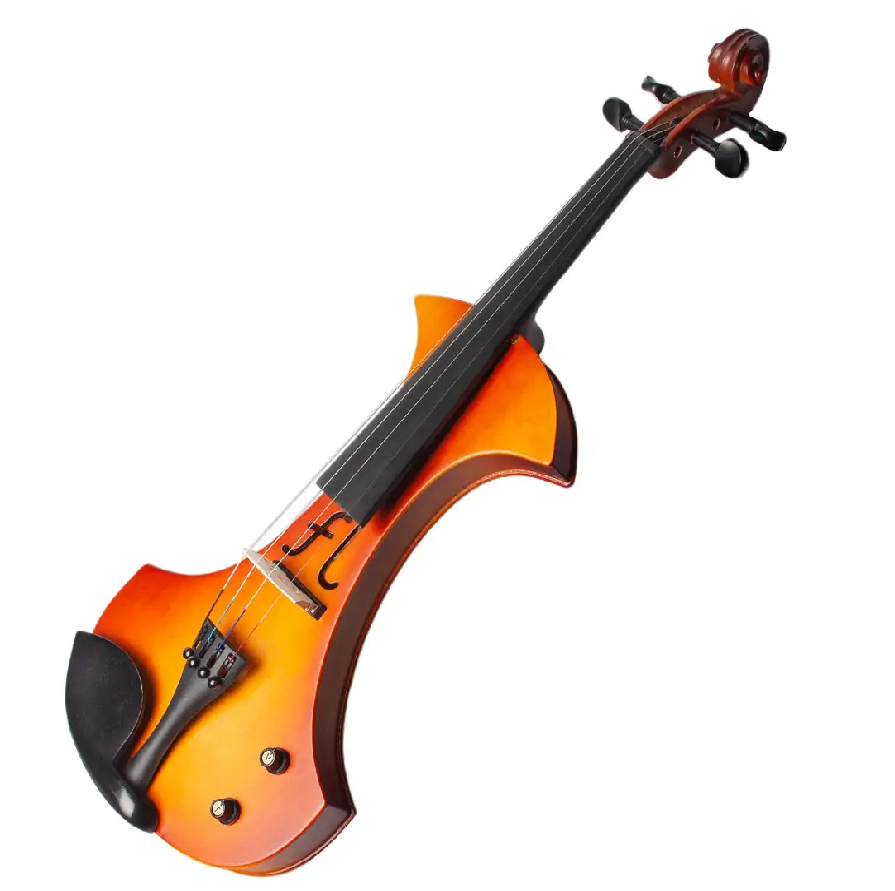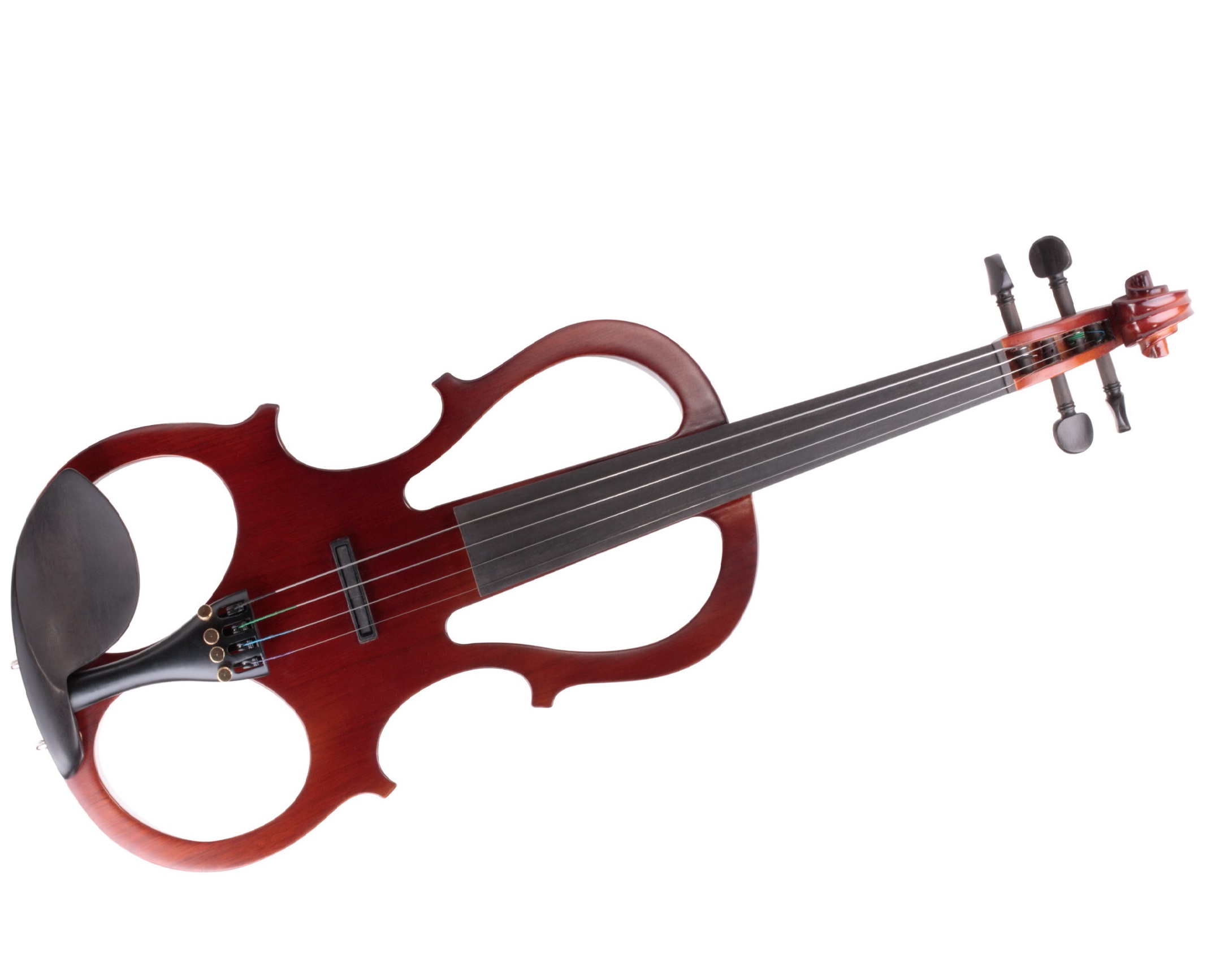Electric violin
Bowed Instruments
America
Between 1901 and present
Video
The electric violin is a modern adaptation of the traditional acoustic violin, designed to amplify sound electronically. Unlike its classical counterpart, which relies on a hollow wooden body to project sound, the electric violin uses built-in electronic pickups to convert string vibrations into electrical signals. These signals can then be processed and amplified, allowing for greater volume, tone modification, and sound effects. Due to these capabilities, the electric violin is popular in various genres, including rock, jazz, pop, electronic music, and contemporary classical compositions.
Type of Instrument
The electric violin falls under the category of bowed string instruments, similar to the acoustic violin, viola, cello, and double bass. It belongs to the family of chordophones, instruments that produce sound through vibrating strings. However, its defining feature is the incorporation of electronic technology for sound production and manipulation. Some electric violins are solid-bodied, while others have semi-hollow designs that allow for some acoustic resonance.
History
The concept of the electric violin emerged in the 20th century, primarily in North America and Europe. The first known electric violin was developed in the 1930s when jazz and early experimental musicians sought ways to increase the volume of their instruments. In 1938, American musician and inventor Stuff Smith was one of the first violinists to amplify his instrument using early electronic technology. The development of the electric violin gained traction in the 1960s and 1970s as rock and jazz musicians experimented with amplified string instruments to match the increasing loudness of electric guitars and drums.
In the 1980s and 1990s, technological advancements led to the production of high-quality electric violins by companies such as Zeta, Yamaha, and Fender. These instruments incorporated advanced electronics, MIDI capabilities, and ergonomic designs. By the 21st century, the electric violin became a versatile instrument used in a variety of musical genres, from classical fusion to heavy metal and electronic dance music.
Materials Used in Electric Violins
Unlike acoustic violins, which are primarily crafted from spruce, maple, and ebony, electric violins use a variety of materials. Many models feature solid bodies made of wood, carbon fiber, plastic, or metal. These materials contribute to the instrument’s durability and resistance to environmental changes. The fingerboard is often made of ebony or other hardwoods, while the strings can be synthetic-core or steel, similar to acoustic violins. Electronic components such as piezoelectric pickups, magnetic pickups, preamps, and digital effects processors play a crucial role in sound production and manipulation.
Types of Electric Violins
Electric violins come in various designs and configurations, catering to different playing styles and preferences. The main types include:
Solid-body Electric Violins – These violins have no hollow resonance chamber, making them resistant to feedback and ideal for amplified performances. They often feature sleek, modern designs.
Semi-hollow Electric Violins – These instruments have some acoustic resonance, offering a blend of traditional and electronic sound qualities.
MIDI and Synth Violins – Equipped with MIDI (Musical Instrument Digital Interface) technology, these violins can control synthesizers and produce a wide range of sounds, including emulations of other instruments.
Five-string and Extended-range Electric Violins – These violins include an extra lower string (C) or additional strings for expanded range and versatility.
Silent Violins – Designed for practice and studio work, silent violins allow for quiet playing through headphones while still offering electronic sound processing.
Characteristics
Electric violins differ significantly from traditional violins in various aspects, including shape, weight, and tonal possibilities. They often have minimalist body frames to reduce weight while maintaining ergonomic comfort. Many models include built-in preamps, equalizers, and effects processors that allow musicians to modify their sound directly from the instrument. Additionally, electric violins can be connected to amplifiers, PA systems, or recording interfaces, making them highly adaptable for live and studio settings.
Sound Production
The sound of an electric violin is generated through electronic pickups, which capture string vibrations and convert them into electrical signals. The most common types of pickups include:
Piezoelectric Pickups – These are the most widely used and function by detecting pressure changes from string vibrations.
Magnetic Pickups – Similar to those used in electric guitars, these pickups work with metal strings to produce a warm, rich tone.
Optical Pickups – Less common but highly precise, these pickups use light sensors to detect string movements without physical contact.
Once the signal is captured, it is sent to an amplifier or effects unit, where it can be shaped and modified with reverb, distortion, delay, and other effects, allowing for an immense range of sonic possibilities.
Playing Methods
Electric violins are played using similar bowing and fingering techniques as acoustic violins. However, due to their electronic nature, players can incorporate additional methods such as:
Looping and Layering – Many electric violinists use loop pedals to layer multiple tracks in real time.
Effects Processing – Musicians can add distortion, delay, chorus, and other effects to alter the instrument’s sound.
Plucking and Tapping – While pizzicato (plucking) is common in acoustic violin playing, electric violinists often employ techniques inspired by guitarists, such as tapping and slapping.
Hybrid Techniques – Some players combine bowing with electronic manipulation, such as controlling MIDI parameters with foot pedals or hands-free controllers.
Roles in Music
The electric violin has found its place in a diverse range of musical styles. Some of its notable roles include:
Rock and Metal – Used by bands like Apocalyptica and Trans-Siberian Orchestra to create powerful, amplified string sections.
Jazz and Fusion – Artists like Jean-Luc Ponty and Didier Lockwood have pioneered the use of electric violin in jazz improvisation. Pop and Electronic Music – Featured in modern pop and EDM tracks for its unique ability to blend acoustic expression with electronic textures. Classical and Film Scores – Used in contemporary classical compositions and movie soundtracks to achieve innovative soundscapes. Folk and Experimental Music – Incorporated in avant-garde and world music to push the boundaries of traditional violin playing.
Cultural Significance
While the electric violin does not have deep historical roots like the acoustic violin, it has gained cultural significance in the modern era. It represents the fusion of tradition and technology, bridging classical string instruments with contemporary sound design. The electric violin has contributed to breaking genre barriers, allowing classically trained violinists to explore new musical territories. Additionally, it has played a role in the accessibility of music education, as silent electric violins provide a means for students to practice without disturbing others.
As global music trends evolve, the electric violin continues to gain recognition as a versatile and innovative instrument, expanding its influence across genres and cultures. Whether in a rock concert, a jazz club, or an electronic music festival, the electric violin embodies the fusion of past and future, offering endless creative possibilities for musicians worldwide.
FAQ
What type of instrument is an electric violin?
An electric violin is a string instrument that uses electronic amplification to produce sound. Unlike an acoustic violin, it requires pickups and an amplifier. It is commonly used in rock, jazz, and fusion music. The instrument offers a modern take on traditional violin playing.
Where did the electric violin originate from?
The electric violin was first developed in the 1930s, with early designs experimented on by companies like Electro Stringed Instrument Corporation. It gained popularity in the late 20th century. Modern designs cater to various musical styles. It is widely used in both classical crossover and contemporary music.
What materials and features define an electric violin?
Electric violins are made from wood, carbon fiber, or plastic, with built-in pickups for sound transmission. They often have a solid body to reduce feedback. Many models include onboard equalizers and effects. Their sound can be modified using external processors and amplifiers.
 Links
Links
References
Other Instrument
Categories




















